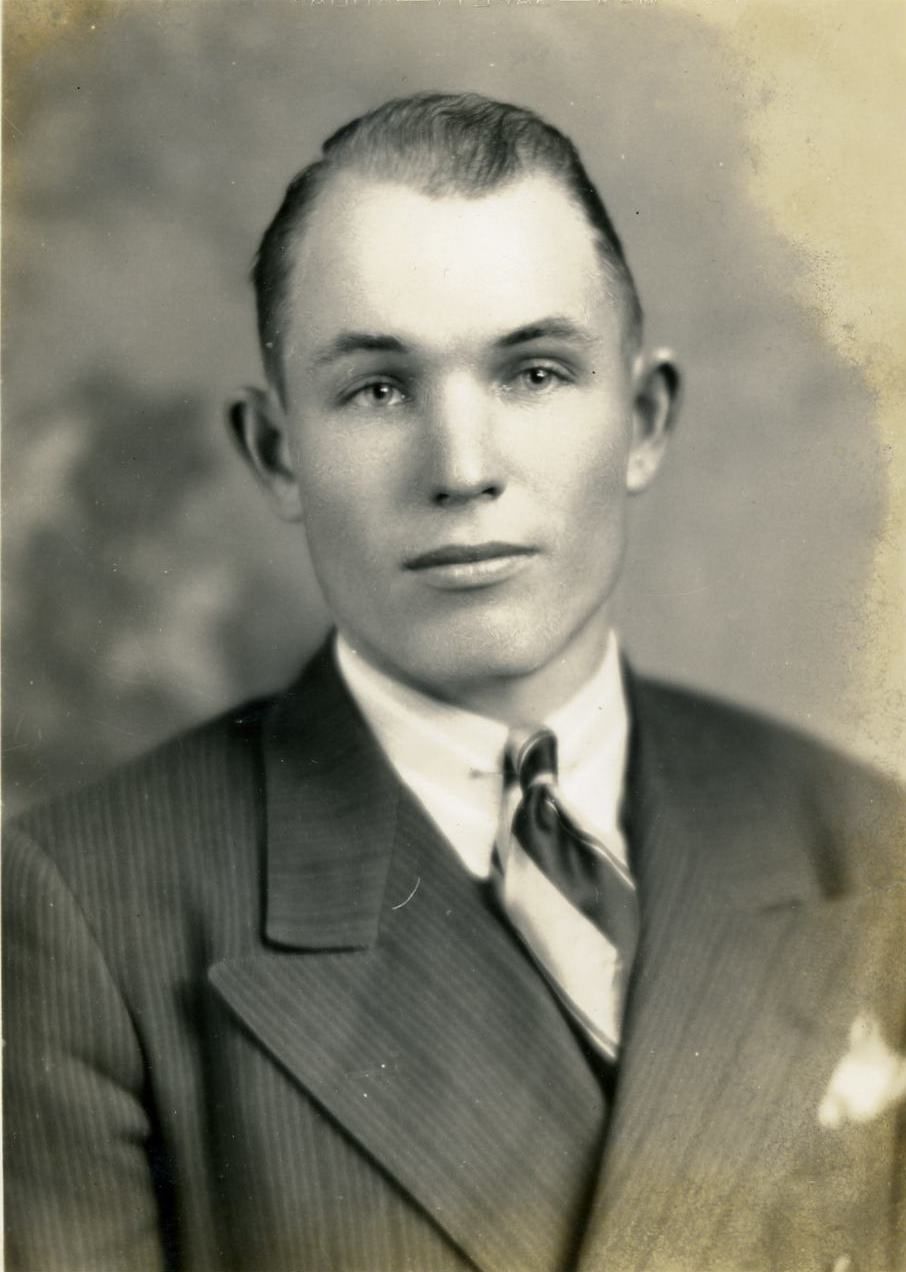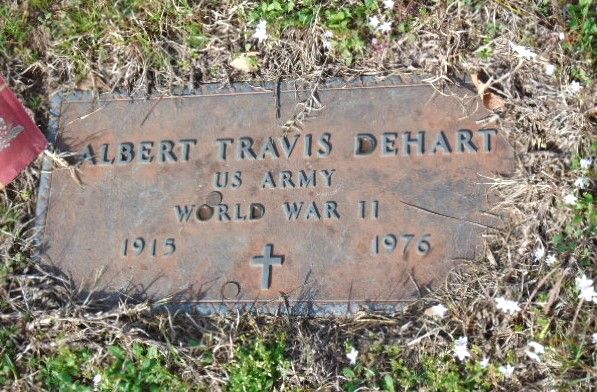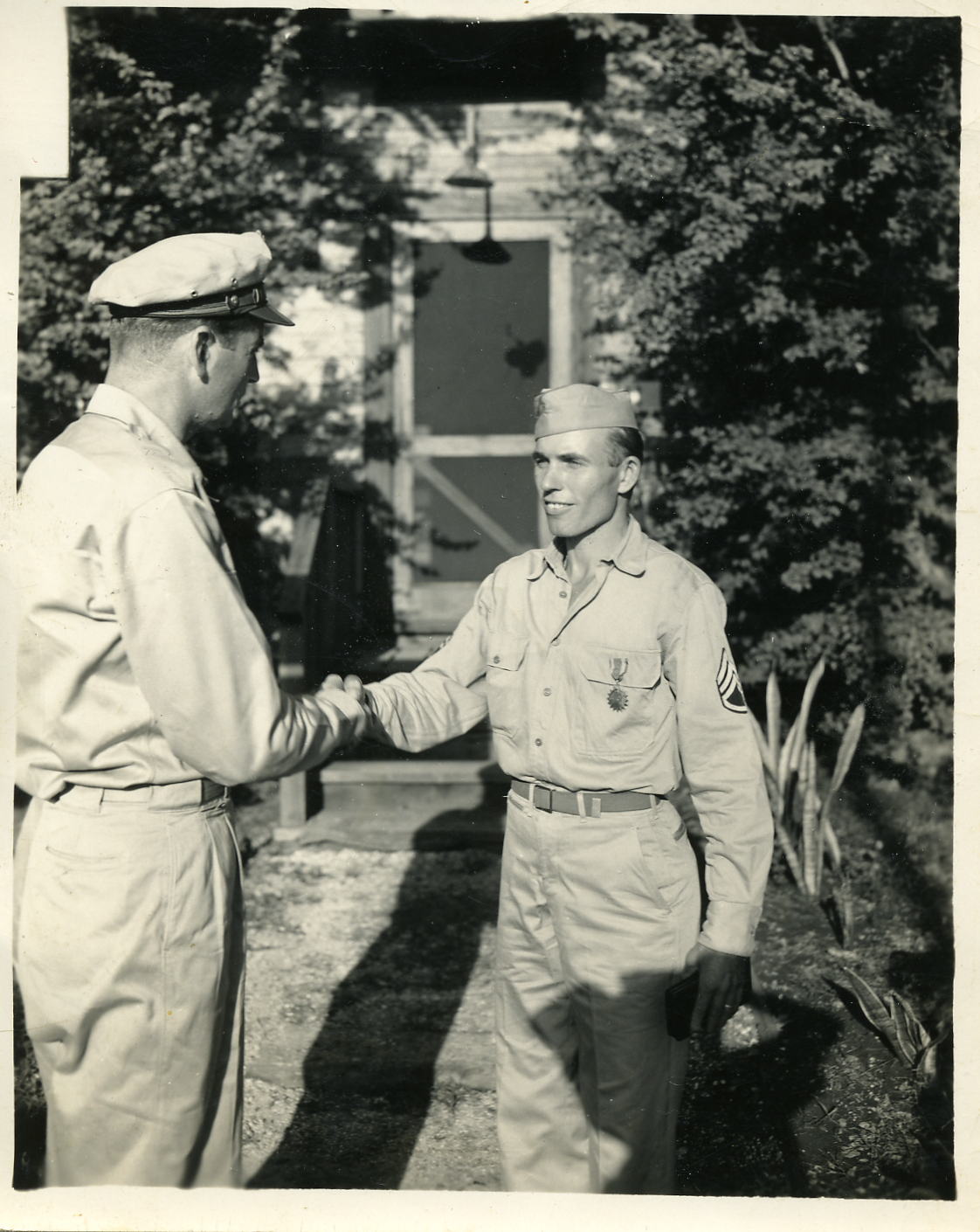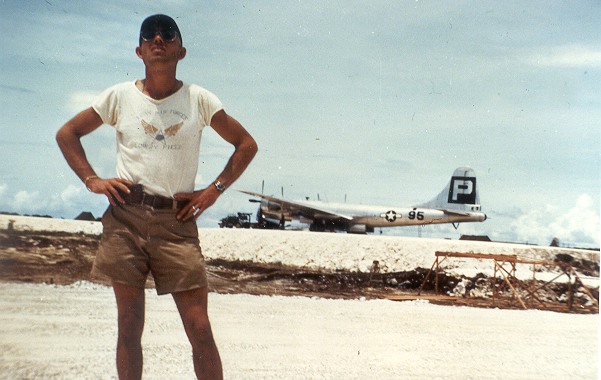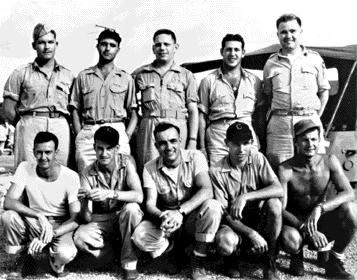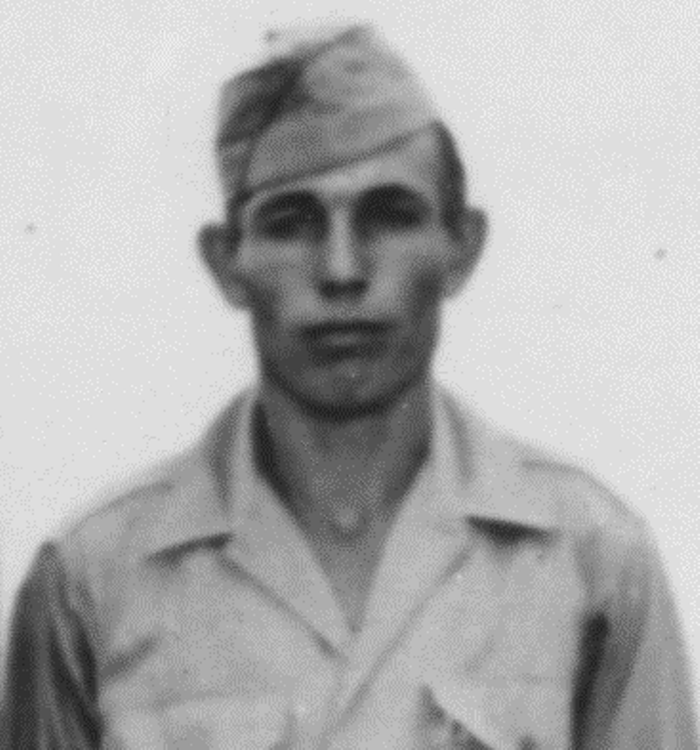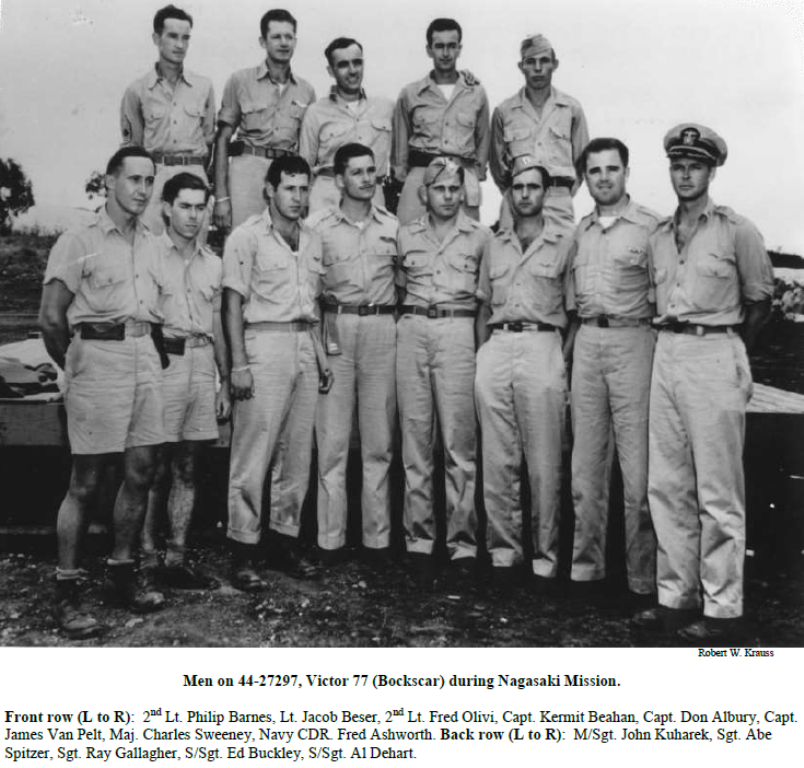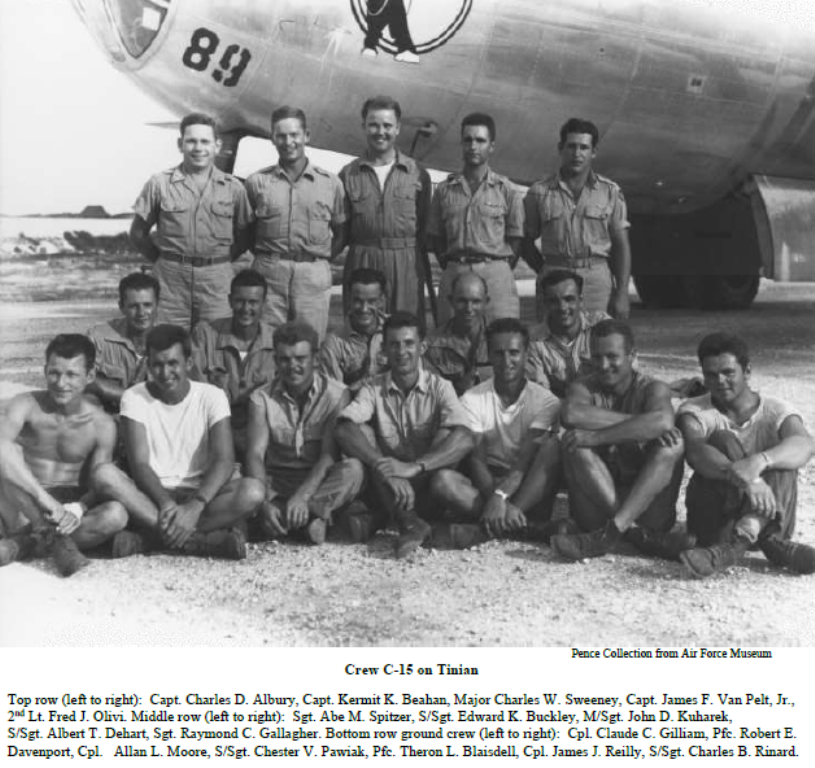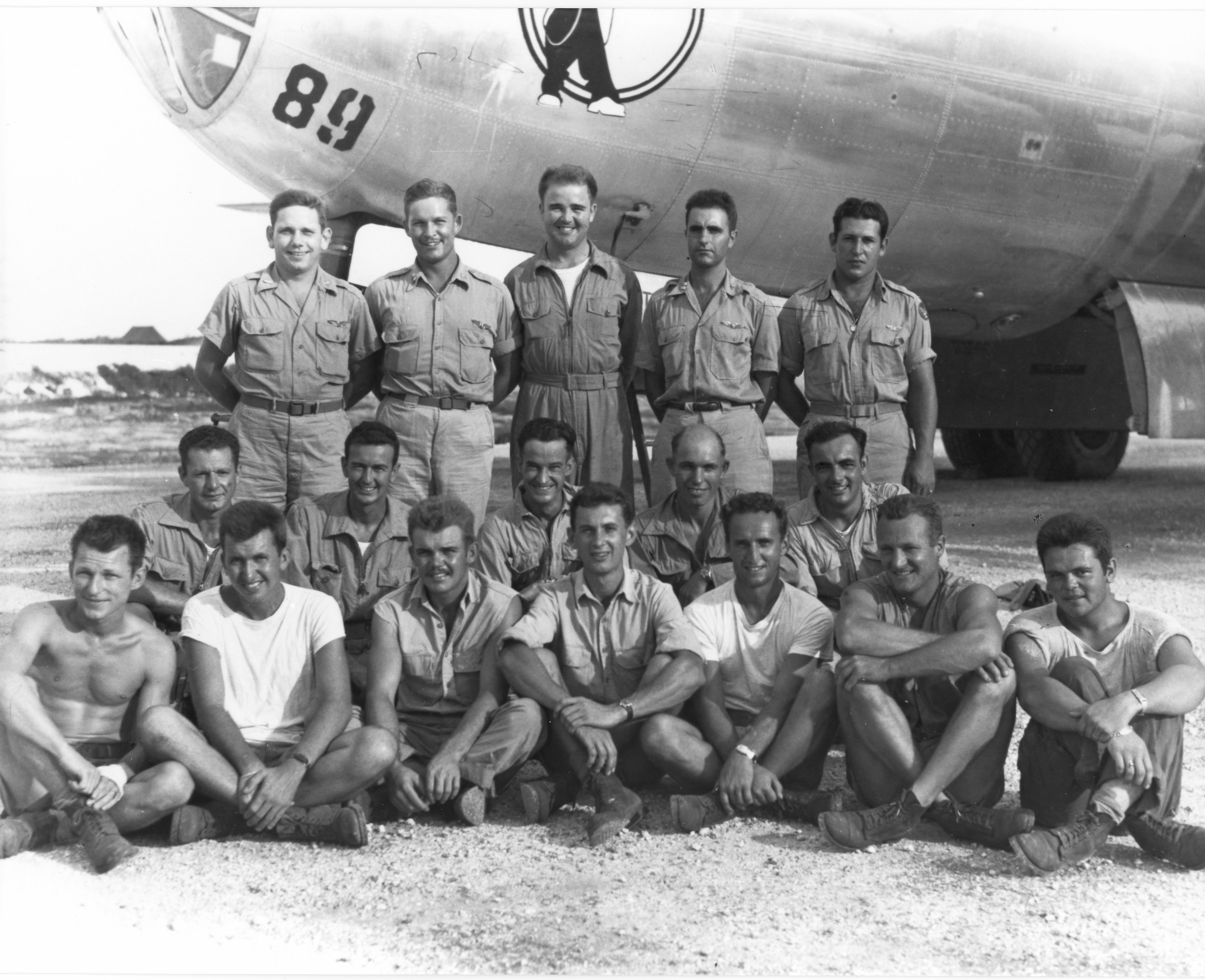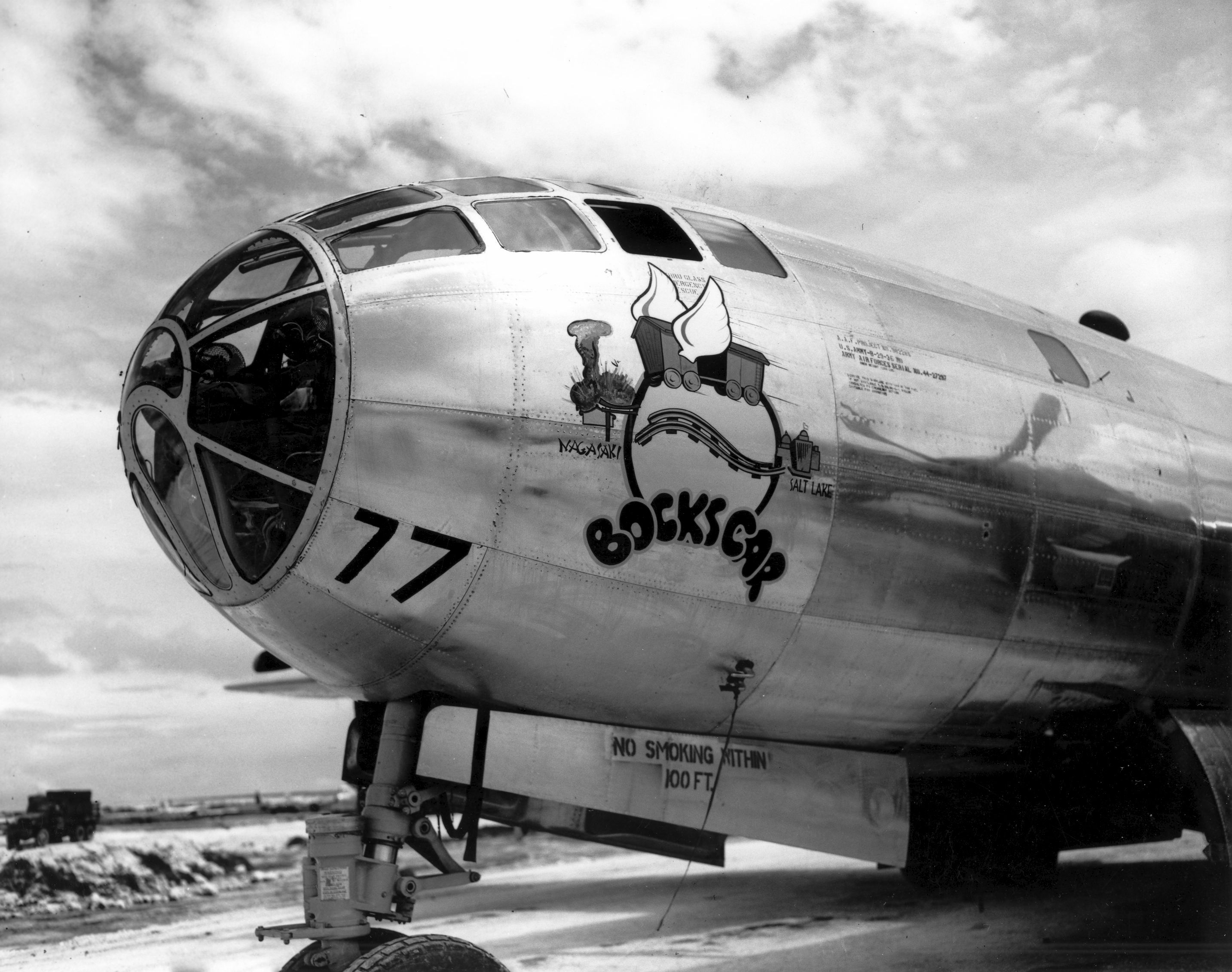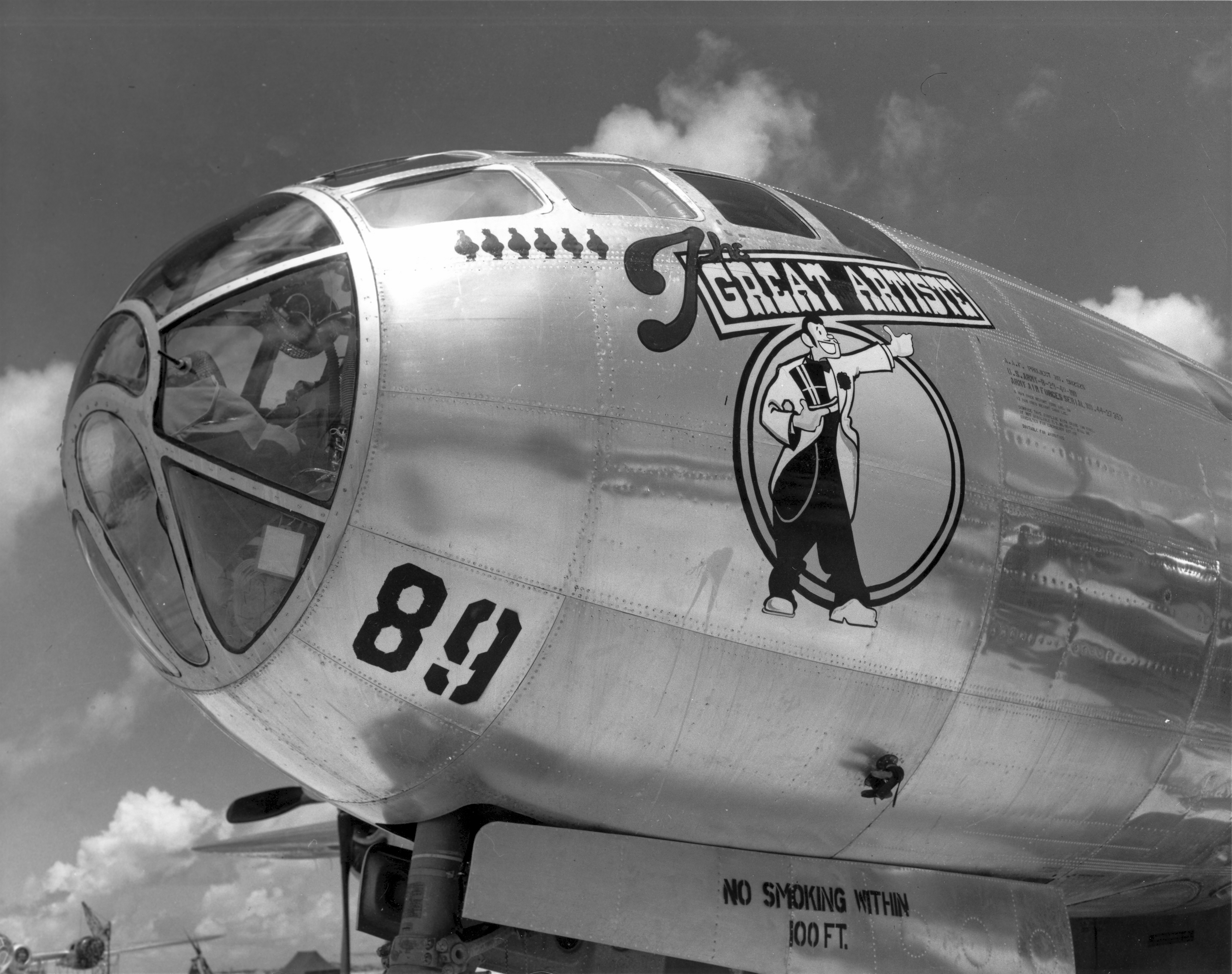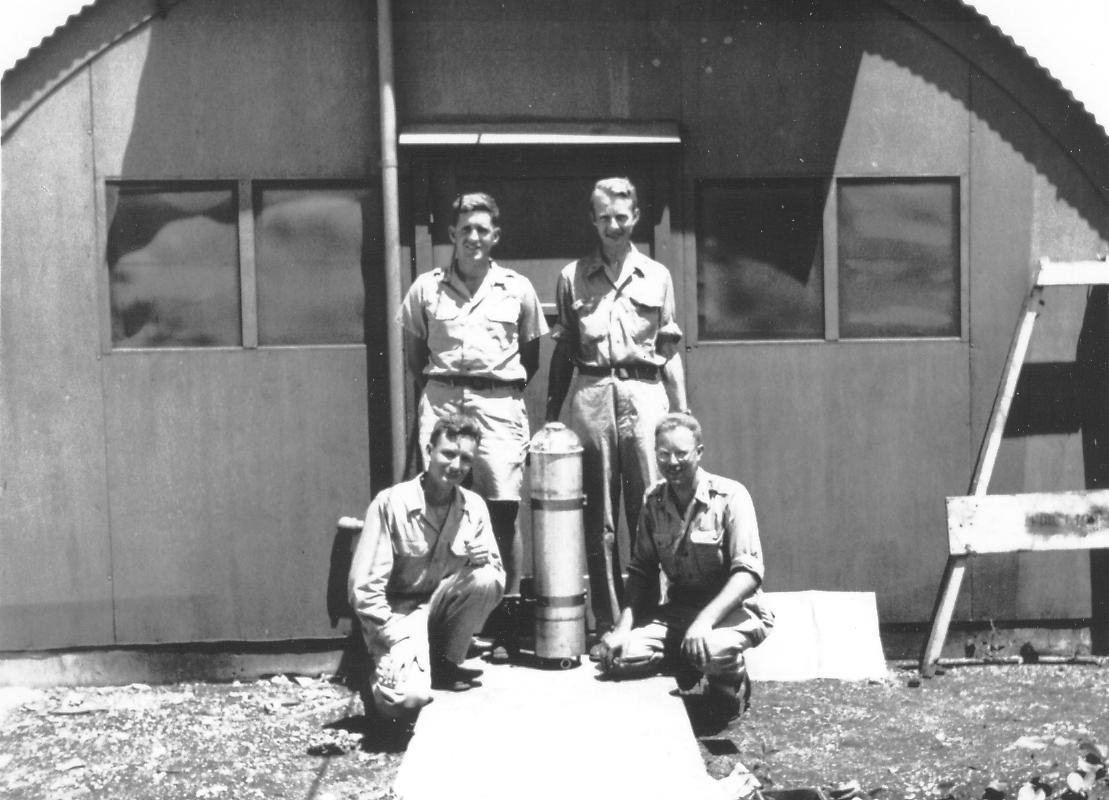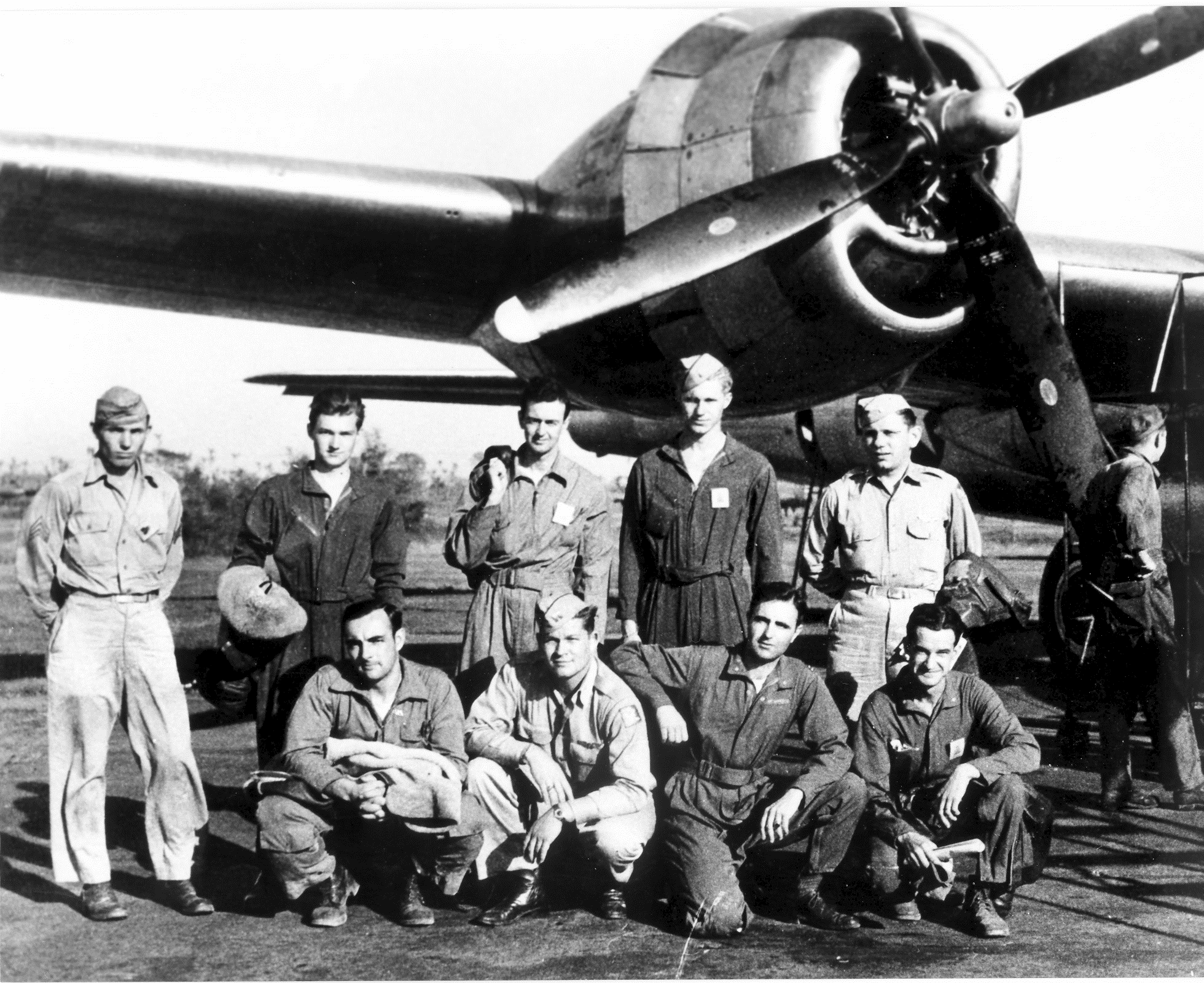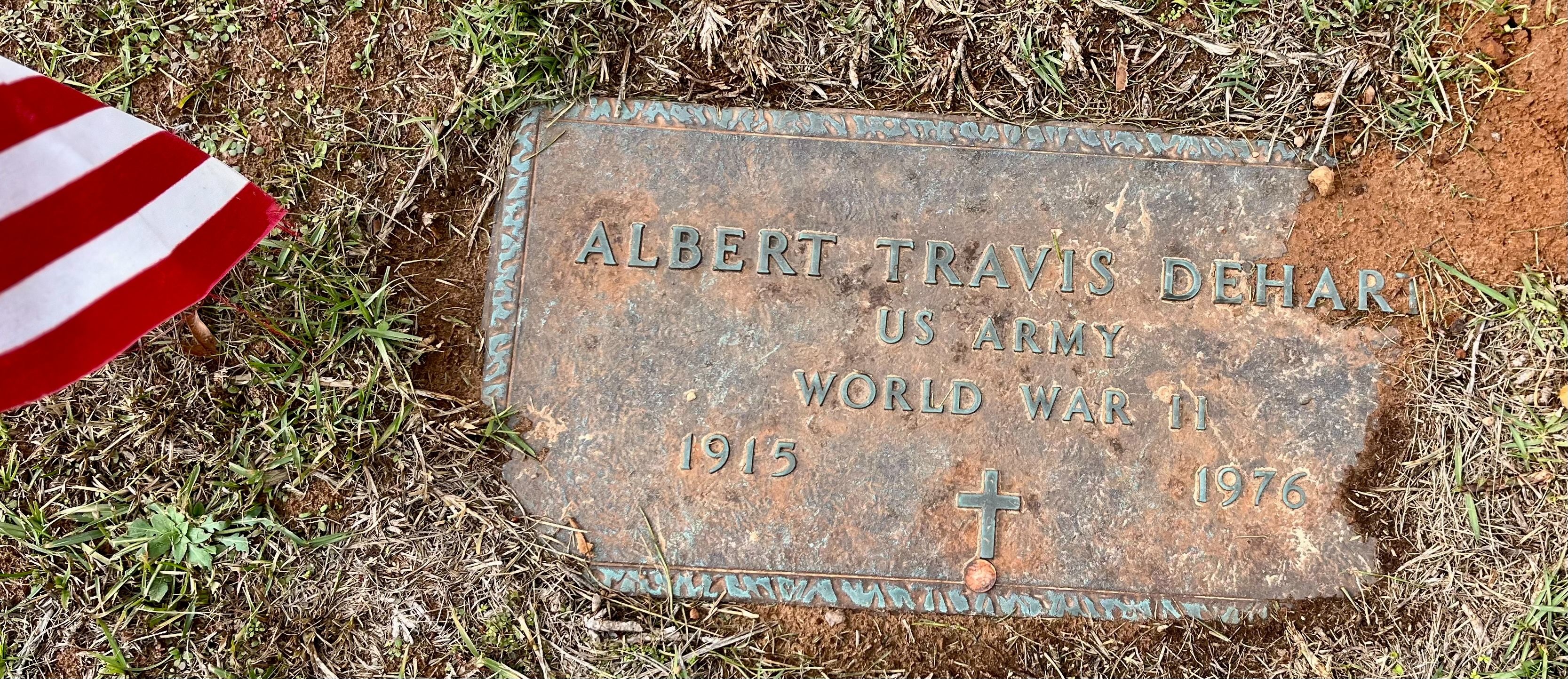On January 29, 1943 Albert enlisted in the Army Air Forces entering service at Shreveport, Louisiana, Service No. 38388039. He was a graduate of the B-29 Aircraft Armament and Central Fire Control School, Lowery Army Air Field, Denver, Colorado advancing to the rank of Sergeant. Albert was then assigned to Eglin Air Field, Proving Ground, located near Valparaiso, Florida in the states northwestern panhandle. This base was a primary testing ground for the then new B-29 Superfortress.
At Eglin Air Field in December 1943 Albert met Col Paul Tibbets who was in charge of many aspects of B-29 development. Col Tibbets drew Albert and several others at Eglin Field to join him in the creation of the 509th Composite Group being forming at Wendover Army Air Field, Wendover, Utah in mid-September 1944.
At Wendover Albert, who had picked up the nickname 'Pappy' was assigned as tail gunner to Crew C-15 with Capt Charles "Don" Albury as Aircraft Commander. The training at Wendover, which included several weeks temporary duty in Cuba during January 1945 for over water training, lasted thru June 1945.
On 22 June 1945 Albert and the Don Albury crew C-15 including Major Charles Sweeney 393rd Squadron commanding officer departed Wendover Field for their new base of operations at North Field, Tinian, Mariana Islands. The normally assigned aircraft for Albert and crew C-15 was Silverplate-(i.e. nuclear capable) B-29 Serial Number 44-27353, Victor No. 89 later named 'The Great Artiste' This aircraft had been modified as the strike force instrument plane. The aft bomb bay was modified to carry 3 parachute delivered instrument canisters to measure the atomic blast pressure to determine the weapons actual yield. The aft gunner compartment had been converted into an instrument receiving station for these canister transmitted signals. Canisters were deployed simultaneously when the atomic weapons were released from the weapon carrying aircraft. This was the role of Albert and crew C-15 aboard 'The Great Artiste' during the first atomic mission codename 'Centerboard I' which destroyed Hiroshima.
During the second atomic bombing mission codename 'Centerboard II' targeting (Kokura / Nagasaki) the 'The Great Artiste' remained the instrument plane. Major Sweeney had been selected by Col Tibbets to lead this mission. As such Albert and crew C-15 switched planes with Major Fred Bock whose crew C-13 was normally assigned to Silverplate B-29, 44-27297, Victor No, 77, later named 'Bockscar'. The result was that Albert and crew C-15 with Major Sweeney as aircraft commander flew 'Bockscar' carrying the "Fat Man" Plutonium Pu-239 weapon, and Major Bock and his crew C-13 were flying 'The Great Artiste' the instrument plane.After the Japanese surrender was secured the 509th Composite Group was permitted to return to the United States at their new home base near Roswell, New Mexico.
Albert was honorably discharged from the Army Air Force on November 20, 1945 likely days after wheels touched down at Roswell Field. After the war Albert was employed as a professional roofer from 1946 to 1972 in Panhandle, Texas up in Carson County. He returned to Marshall, Texas in 1972.
Albert died on Thursday December 31, 1976 at Shreveport Hospital following a lengthy illness.Brief bio courtesy Scott Muselin – Vindicator I∼Military Figure. A US Army-Air Corps Staff Sargeant during World War II, he was the tail gunner aboard the airplane "Bock's Car" which dropped the second Atomic Bomb on Nagasaki Japan on August 9, 1945.
On January 29, 1943 Albert enlisted in the Army Air Forces entering service at Shreveport, Louisiana, Service No. 38388039. He was a graduate of the B-29 Aircraft Armament and Central Fire Control School, Lowery Army Air Field, Denver, Colorado advancing to the rank of Sergeant. Albert was then assigned to Eglin Air Field, Proving Ground, located near Valparaiso, Florida in the states northwestern panhandle. This base was a primary testing ground for the then new B-29 Superfortress.
At Eglin Air Field in December 1943 Albert met Col Paul Tibbets who was in charge of many aspects of B-29 development. Col Tibbets drew Albert and several others at Eglin Field to join him in the creation of the 509th Composite Group being forming at Wendover Army Air Field, Wendover, Utah in mid-September 1944.
At Wendover Albert, who had picked up the nickname 'Pappy' was assigned as tail gunner to Crew C-15 with Capt Charles "Don" Albury as Aircraft Commander. The training at Wendover, which included several weeks temporary duty in Cuba during January 1945 for over water training, lasted thru June 1945.
On 22 June 1945 Albert and the Don Albury crew C-15 including Major Charles Sweeney 393rd Squadron commanding officer departed Wendover Field for their new base of operations at North Field, Tinian, Mariana Islands. The normally assigned aircraft for Albert and crew C-15 was Silverplate-(i.e. nuclear capable) B-29 Serial Number 44-27353, Victor No. 89 later named 'The Great Artiste' This aircraft had been modified as the strike force instrument plane. The aft bomb bay was modified to carry 3 parachute delivered instrument canisters to measure the atomic blast pressure to determine the weapons actual yield. The aft gunner compartment had been converted into an instrument receiving station for these canister transmitted signals. Canisters were deployed simultaneously when the atomic weapons were released from the weapon carrying aircraft. This was the role of Albert and crew C-15 aboard 'The Great Artiste' during the first atomic mission codename 'Centerboard I' which destroyed Hiroshima.
During the second atomic bombing mission codename 'Centerboard II' targeting (Kokura / Nagasaki) the 'The Great Artiste' remained the instrument plane. Major Sweeney had been selected by Col Tibbets to lead this mission. As such Albert and crew C-15 switched planes with Major Fred Bock whose crew C-13 was normally assigned to Silverplate B-29, 44-27297, Victor No, 77, later named 'Bockscar'. The result was that Albert and crew C-15 with Major Sweeney as aircraft commander flew 'Bockscar' carrying the "Fat Man" Plutonium Pu-239 weapon, and Major Bock and his crew C-13 were flying 'The Great Artiste' the instrument plane.After the Japanese surrender was secured the 509th Composite Group was permitted to return to the United States at their new home base near Roswell, New Mexico.
Albert was honorably discharged from the Army Air Force on November 20, 1945 likely days after wheels touched down at Roswell Field. After the war Albert was employed as a professional roofer from 1946 to 1972 in Panhandle, Texas up in Carson County. He returned to Marshall, Texas in 1972.
Albert died on Thursday December 31, 1976 at Shreveport Hospital following a lengthy illness.Brief bio courtesy Scott Muselin – Vindicator I∼Military Figure. A US Army-Air Corps Staff Sargeant during World War II, he was the tail gunner aboard the airplane "Bock's Car" which dropped the second Atomic Bomb on Nagasaki Japan on August 9, 1945.
Inscription
U.S. ARMY WW II








